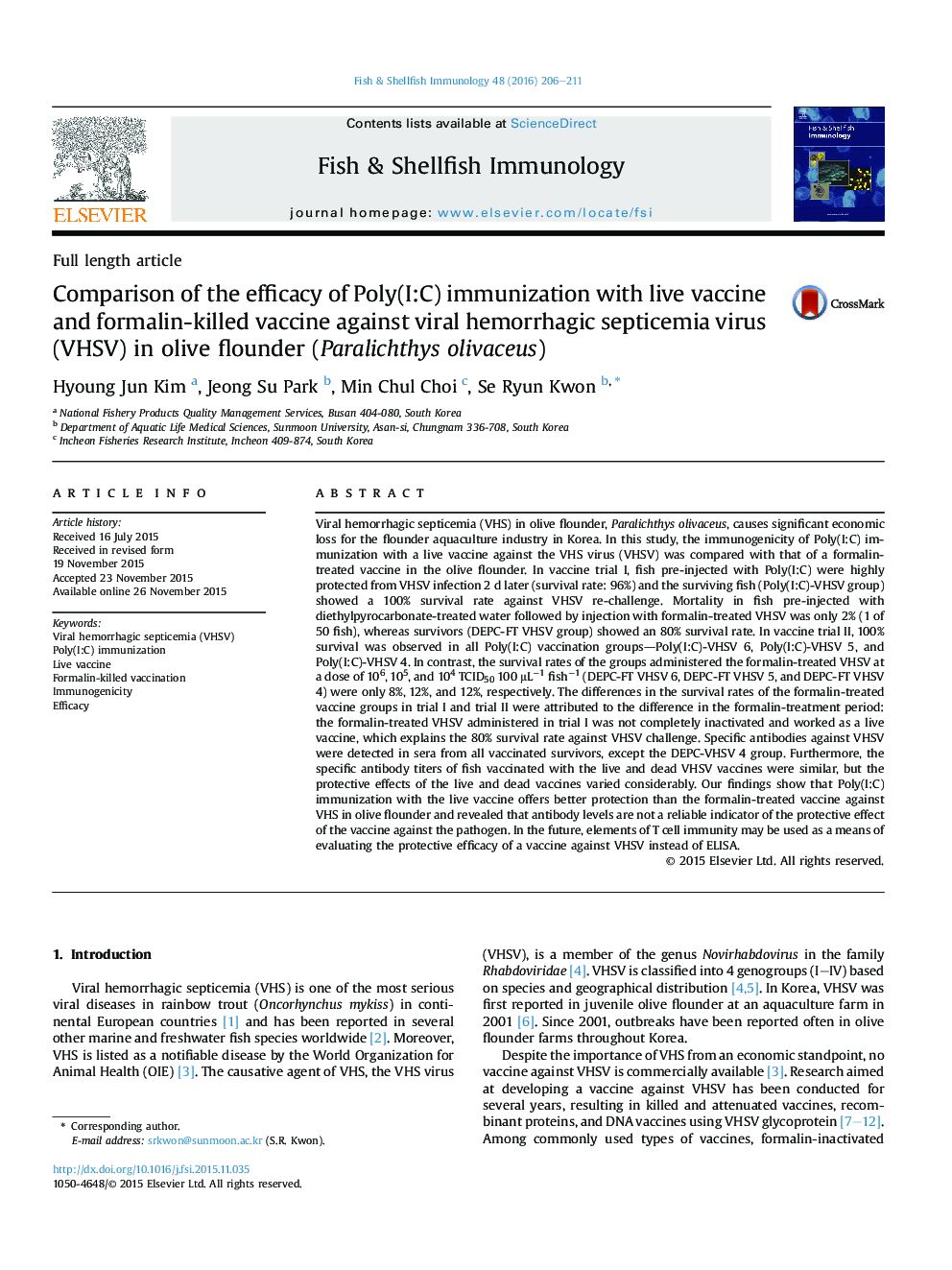| کد مقاله | کد نشریه | سال انتشار | مقاله انگلیسی | نسخه تمام متن |
|---|---|---|---|---|
| 2430897 | 1553626 | 2016 | 6 صفحه PDF | دانلود رایگان |

• The immunogenicity of live and formalin-treated VHSV vaccines was compared.
• Poly(I:C) with live VHSV offered better protection than the formalin-treated vaccine.
• Antibody titers of fish vaccinated with live and dead VHSV vaccines were similar.
• Assessment of T cell immunity may be used as a means of determining the protective efficacy of a vaccine against VHSV.
Viral hemorrhagic septicemia (VHS) in olive flounder, Paralichthys olivaceus, causes significant economic loss for the flounder aquaculture industry in Korea. In this study, the immunogenicity of Poly(I:C) immunization with a live vaccine against the VHS virus (VHSV) was compared with that of a formalin-treated vaccine in the olive flounder. In vaccine trial I, fish pre-injected with Poly(I:C) were highly protected from VHSV infection 2 d later (survival rate: 96%) and the surviving fish (Poly(I:C)-VHSV group) showed a 100% survival rate against VHSV re-challenge. Mortality in fish pre-injected with diethylpyrocarbonate-treated water followed by injection with formalin-treated VHSV was only 2% (1 of 50 fish), whereas survivors (DEPC-FT VHSV group) showed an 80% survival rate. In vaccine trial II, 100% survival was observed in all Poly(I:C) vaccination groups—Poly(I:C)-VHSV 6, Poly(I:C)-VHSV 5, and Poly(I:C)-VHSV 4. In contrast, the survival rates of the groups administered the formalin-treated VHSV at a dose of 106, 105, and 104 TCID50 100 μL−1 fish−1 (DEPC-FT VHSV 6, DEPC-FT VHSV 5, and DEPC-FT VHSV 4) were only 8%, 12%, and 12%, respectively. The differences in the survival rates of the formalin-treated vaccine groups in trial I and trial II were attributed to the difference in the formalin-treatment period: the formalin-treated VHSV administered in trial I was not completely inactivated and worked as a live vaccine, which explains the 80% survival rate against VHSV challenge. Specific antibodies against VHSV were detected in sera from all vaccinated survivors, except the DEPC-VHSV 4 group. Furthermore, the specific antibody titers of fish vaccinated with the live and dead VHSV vaccines were similar, but the protective effects of the live and dead vaccines varied considerably. Our findings show that Poly(I:C) immunization with the live vaccine offers better protection than the formalin-treated vaccine against VHS in olive flounder and revealed that antibody levels are not a reliable indicator of the protective effect of the vaccine against the pathogen. In the future, elements of T cell immunity may be used as a means of evaluating the protective efficacy of a vaccine against VHSV instead of ELISA.
Journal: Fish & Shellfish Immunology - Volume 48, January 2016, Pages 206–211